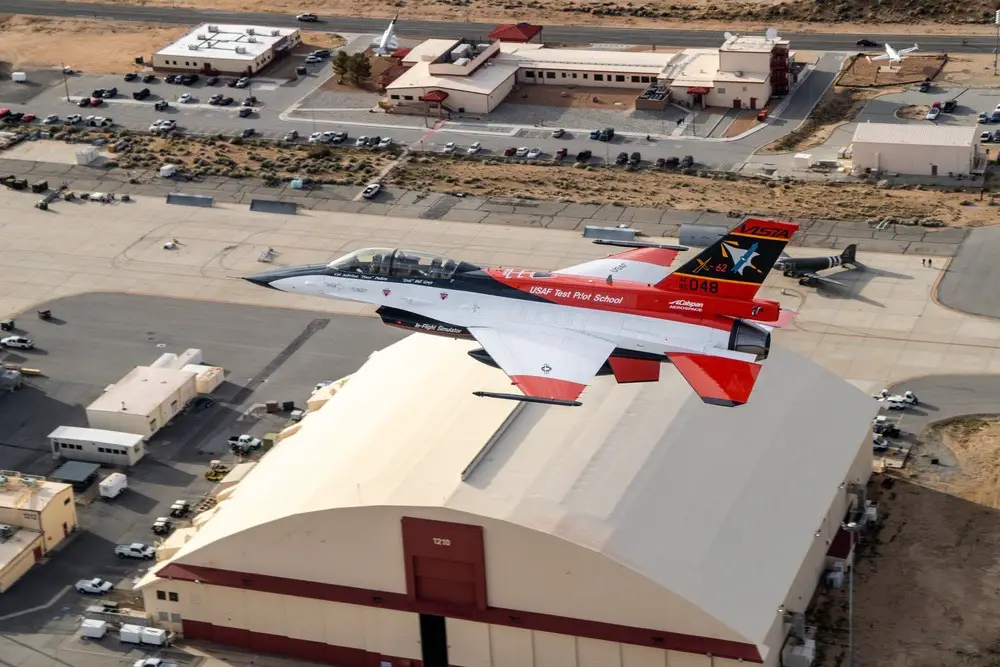On April 17, 2024, DARPA released a video announcing the first-ever flight tests of AI algorithms autonomously piloting an X-62A against a human-piloted F-16 in visual range air combat scenarios. This test flight marks a significant milestone for the future of unmanned combat aircraft programs, such as the US Air Force's Collaborative Combat Aircraft project.
Follow Army Recognition on Google News at this link

The X-62A, initially designated as NF-16D and renamed for its new role, is a deeply modified two-seat F-16D (Picture source: US DoD)
In these tests, the ACE AI algorithms controlled a specially modified F-16 test aircraft, known as the X-62A or VISTA (Variable In-flight Simulator Test Aircraft), at the Air Force Test Pilot School located at Edwards Air Force Base in California. Here, all demonstrations of autonomous combat maneuvers took place throughout 2023 and continued into 2024.
The X-62A, initially designated as NF-16D and renamed for its new role, is a deeply modified two-seat F-16D. Designed as a variable stability in-flight simulator test aircraft, it can emulate the flight systems of nearly any aircraft, making it an ideal platform for a variety of real-world tests. This capability positions VISTA as a prime platform to support DARPA's Air Combat Evolution (ACE) program, which includes key participation from the US Air Force, the USAF Test Pilot School (USAF TPS), and the Air Force Research Laboratory (AFRL), along with numerous industrial and academic partners.
The development of the artificial intelligence used by the X-62A began in 2022, with autonomous flight tests using these algorithms conducted as early as December of that year. These advancements were made public in February 2023 and allowed for nearly daily adjustments of the "agents," with over 100,000 lines of code altered. In September 2023, the jet engaged in air-to-air combat against a manned F-16, starting with defensive maneuvers before progressing to offensive engagements and high-speed head-on confrontations.
However, program officials emphasize that the purpose of these tests extends well beyond mere air combat. The lessons learned apply to a wide range of tasks that autonomous systems could perform. The trials also highlight the challenges of using machine learning algorithms in real operational conditions, particularly concerning their comprehensibility and verification for potential certification in flight-critical systems.
Safety remains a major concern, with integrated "safety nets" designed to prevent the aircraft from engaging in dangerous or unethical behaviors. This includes setting safe flight boundaries and measures to prevent collisions. The program underscores that a human will always be involved in the operational loop of autonomous weapon systems, although the exact role of this human may evolve.
The implications of these developments are not limited to the military sector; they could also impact commercial aviation and are closely monitored by international competitors, particularly China. Thus, the ACE program and underlying technologies could redefine approaches to machine learning applications in aerospace and aeronautics.
Further revelations about the ACE program and the role of the X-62A are expected later this week, promising new insights into the capabilities and future applications of this cutting-edge technology.
Defense News April 2024
















